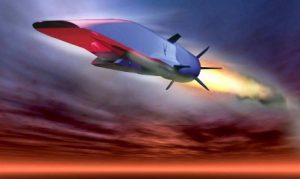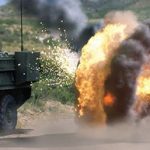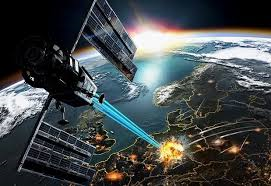The nature of war remains inherently humanistic and largely unchanging. That said, Mad Scientists must understand the changing character of warfare in the future Operational Environment, as discussed on pages 16-18 of The Operational Environment and the Changing Character of Future Warfare. With emergences in technologies that are so significant, extensive, and pervasive, warfare will be transformed – made faster, more destructive, and fought at longer ranges; targeting civilians and military equally across the physical, cognitive, and moral dimensions; and (if waged effectively) securing its objectives before actual battle is joined. Although the character of warfare changes dramatically, there are a number of timeless competitions that will endure for the foreseeable future.
Finders vs Hiders. As in preceding decades, that which can be found, if unprotected, can still be hit. By 2050, it will prove increasingly difficult to stay hidden. Most competitors can access space-based surveillance, networked multi-static radars, a wide variety of drones / swarms of drones,  and a vast array of passive and active sensors that are far cheaper to produce than the countermeasures required to defeat them. Quantum computing and advanced sensing will open new levels of situational awareness. Passive sensing, especially when combined with artificial intelligence and big-data techniques, may routinely outperform active sensors.
and a vast array of passive and active sensors that are far cheaper to produce than the countermeasures required to defeat them. Quantum computing and advanced sensing will open new levels of situational awareness. Passive sensing, especially when combined with artificial intelligence and big-data techniques, may routinely outperform active sensors.  Hiding will still be possible, but will require a dramatic reduction of thermal, electromagnetic, and optical signatures. More successful methods may involve “hiding” amongst an obscuration of emitters and signals – presenting adversaries with a veritable needle within a stack of like-appearing and emitting needles.
Hiding will still be possible, but will require a dramatic reduction of thermal, electromagnetic, and optical signatures. More successful methods may involve “hiding” amongst an obscuration of emitters and signals – presenting adversaries with a veritable needle within a stack of like-appearing and emitting needles.
Strikers vs Shielders. Precision strike will improve exponentially through 2050, with the type of precision once formerly reserved for high-end aerospace assets now extended to all domains and at every echelon of engagement. Combatants, both state and non-state, will have a host of advanced delivery options available to them, including advanced kinetic weapons, hypersonics, directed energy (including laser and microwave), and cyber. Space-based assets will become increasingly integrated into striker-shielder complexes, with sensors, anti-satellite weapons, and possibly space-to-earth strike platforms. 
At the same time, and on the other end of the spectrum, it will be possible to deploy swarms of massed, low-cost, self-organizing unmanned systems (directed by bio-mimetic algorithms) to overwhelm opponents, offering an alternative to expensive, exquisite systems. With operational range spanning from the strategic – including the homeland – to the tactical, the application of advanced fires from one domain to another will become routine. A wide range of effects can be delivered by a striker, ranging from point precision to area suppression using thermobarics, brilliant cluster munitions, and even a variety of nuclear, chemical, or biological systems. Shielders, on the other hand, will focus on an integrated approach to defense, which target enemy finders, their linkages to strikers, or the strikers themselves.
Protection vs Access. While protection vs. access is generally thought about in physical terms,
there is a more prevalent competition emerging in the future regarding cyber protection and access to data. Data is increasingly important,  as it underpins AI, machine learning, decision-making, and battlefield management. Due to its vital but often sensitive nature, there is a tension point between the need to access friendly and adversarial information and the need for both sides to protect it.
as it underpins AI, machine learning, decision-making, and battlefield management. Due to its vital but often sensitive nature, there is a tension point between the need to access friendly and adversarial information and the need for both sides to protect it.
Planning and Judgement vs Reaction and Autonomy. The mid-Century duel for the initiative has a unique character. New operational tools offer extraordinary speed and reach and often precipitate unintended consequences. Commanders will need to open multi-domain windows through which to deliver effects, balancing deliberate planning to set conditions with “l’audace” — the ability to rapidly exploit opportunities and strike at vulnerabilities as they appear — thereby achieving success against sophisticated defensive deployments and shielder complexes.

This will place an absolute imperative on ISR, as well as on intelligence analysis that is augmented by AI, big data, and advanced analytic techniques to determine the conditions on the battlefield, and specifically when, and for how long, a window of operation is open. On the defensive, a commander will be faced with increasingly short decision cycles, with automation and artificial intelligence-assisted decisions becoming the norm. Man-machine teaming will be essential to staff planning, with carefully trained, educated, and possibly cognitive performance-enhanced personnel working to create and exploit opportunities. This means that Armies no longer merely adapt between wars, but do so between and during short-term engagements.
Escalation vs De-Escalation. The competition between violence escalation and de-escalation will be central to stability, deterrence, and strategic success. Violence is readily available on unprecedented scales to a wide-range of actors. Conventional and cyber capabilities can be so potent as to generate effects on the scale of WMD. State and non-state actors alike will utilize hybrid strategies and “Gray Zone” operations, demonstrating a willingness to escalate conflict to a level of violence that exceeds the interests of an adversary to intervene. Long-range strikers and shielder complexes, which extend from the terrestrial domains into space – taken together with cyber technology and more ubiquitous finders – are significantly destabilizing and allow a combatant a freedom of maneuver to achieve objectives short of open war. The ability to effectively escalate and de-escalate along a scalable series of options will be a prominent feature of force design, doctrine, and policy by mid-Century.
Conventional and cyber capabilities can be so potent as to generate effects on the scale of WMD. State and non-state actors alike will utilize hybrid strategies and “Gray Zone” operations, demonstrating a willingness to escalate conflict to a level of violence that exceeds the interests of an adversary to intervene. Long-range strikers and shielder complexes, which extend from the terrestrial domains into space – taken together with cyber technology and more ubiquitous finders – are significantly destabilizing and allow a combatant a freedom of maneuver to achieve objectives short of open war. The ability to effectively escalate and de-escalate along a scalable series of options will be a prominent feature of force design, doctrine, and policy by mid-Century.

These timeless competitions prompt the following questions:
1) What kind of R&D implications might each of these competitions have? Does R&D become increasingly ceded to the private sector as technological advances become exceedingly agnostic to defensive and offensive focuses?
2) In what ways do technological shifts in society impact these timeless competitions? (i.e., does the emergence of the Internet of Things – and eventually Internet of Everything – re-characterize Hiders vs. Finders?)
3) Does the democratization of technology and information increase the role of the Army in land warfare or does the pervasive nature of these technologies and cyber force the Army to incorporate itself more in a whole-of-government approach?
4) What kind of changes do the evolutions of timeless competitions bring about to Army force structuring, organization, strategy, tactics, training, and recruiting?
For further discussions regarding these Timeless Competitions, please see pages 43-49 of the Robotics, Artificial Intelligence & Autonomy Conference Final Report, and An Advanced Engagement Battlespace: Tactical, Operational and Strategic Implications for the Future Operational Environment.



Speaking of finders, perhaps reviewing things from the potential adversary’s past technology may be something to factor in. After all, hi-tech doesn’t necessarily mean you can win. Case in point: http://www.ibtimes.co.uk/declassified-cold-war-files-reveal-how-soviets-sneaked-behind-enemy-submarines-without-sonar-1648945
Since the Soviets couldn’t technologically advance, then went lateral and did the next best thing (for them). Similarly, as identified in the book “Ghost Fleet,” we have the Chinese tracking our nuclear powered ships using a technique the US had cast off as “unworkable.”
Past examples need to be incorporated into education along with planning as a consideration. This means planners have to understand not only what technology could be employed against US forces, but what is a “gap filler” in relation to what we have, what the others don’t have, and what they do to, as Clint Eastwood portraying Gunny Highway in the movie “Heartbreak Ridge” noted, “Improvise, adapt, overcome.”
After all, how long does it take to replace an F-35 or F-22 (that plane that has no production line) and what is the cost? How long to replace an M1 Abrams tank and get it to the forward lines when there are oceans in the way and enemy subs lurking below trying to sink our cargo ships (like in WW II when we had thousands of vehicles, tanks, etc. lost to Japanese and Nazi torpedoes)? The cost would be enormous because out systems today are hyper-expensive and we don’t have, nor can we recreate, the production capacity of the “Arsenal of Democracy” that won WW II.
Lastly, when it comes to “big data” we seem to have fallen into the trap of “hi-tech.” Is big data what we need or not and can we trust it in the hands of an AI (or with humans)? These articles might shed some light on a view from the other side.
https://www.linkedin.com/pulse/big-data-dead-just-regardless-quantity-structure-speed-thamm?trk=eml-email_feed_ecosystem_digest_01-recommended_articles-14-Unknown&midToken=AQF1g9UZlh8MfQ&fromEmail=fromEmail&ut=28lFkahJ7vwU01
https://www.smithsonianmag.com/smart-news/neural-network-can-maybe-start-novel-better-you-180967300/
https://www.dsiac.org/resources/journals/dsiac/fall-2017-volume-4-number-4 (article beginning page 23)
Finders v Hiders… This dynamic is best understood in the following context: The future fight is clearly about the battle for information… Studies show that the “real battle” and focus of the commander’s attention will be the “sensor fight”… how to optimize, where to place, how to regenerate. Once a target is detected it most likely can be struck… The real paradigm shift will be away from the commander’s hyper-focus on maneuvering forces to a focus on maneuvering a globally integrated multi-spectral sensor architecture.